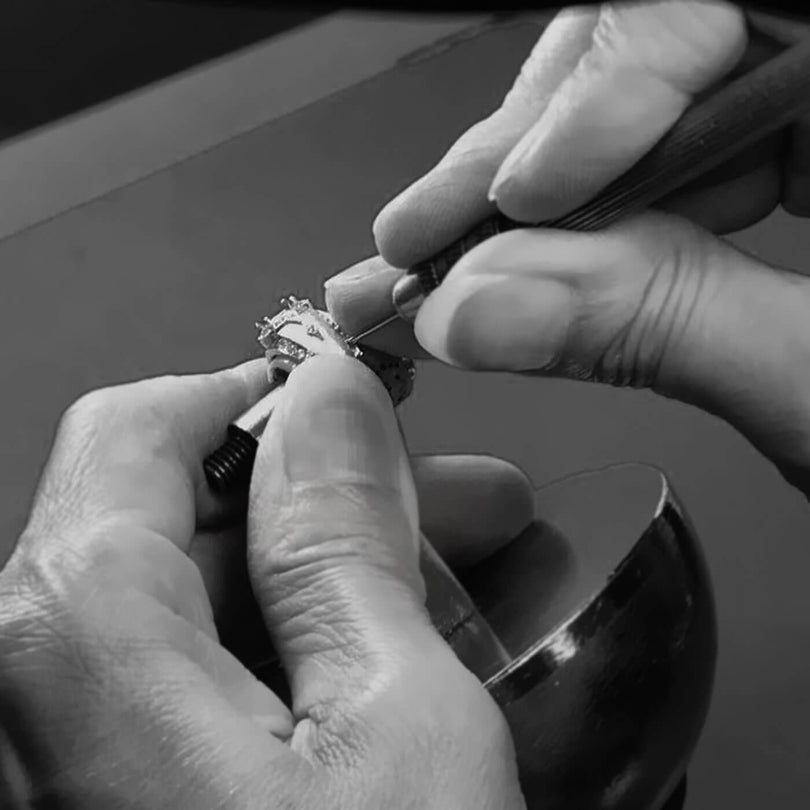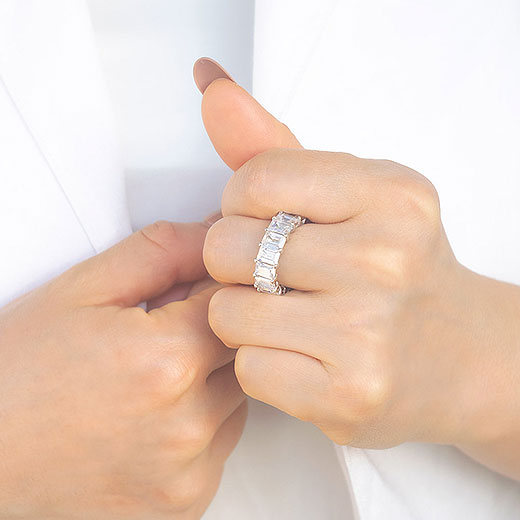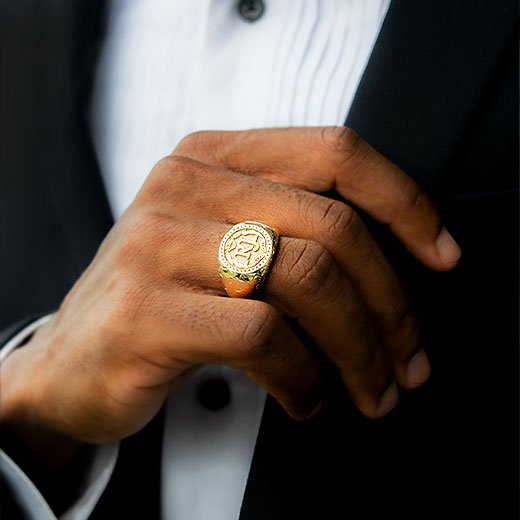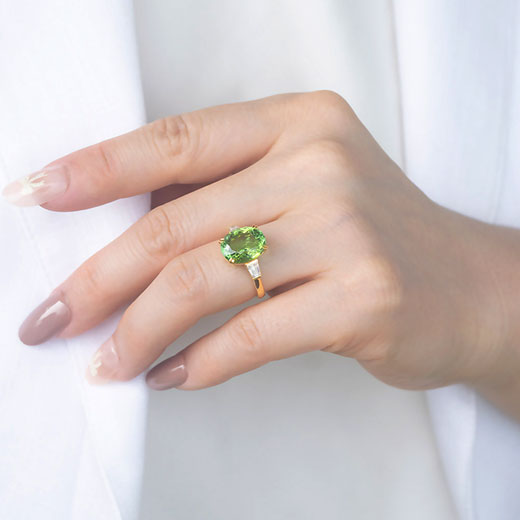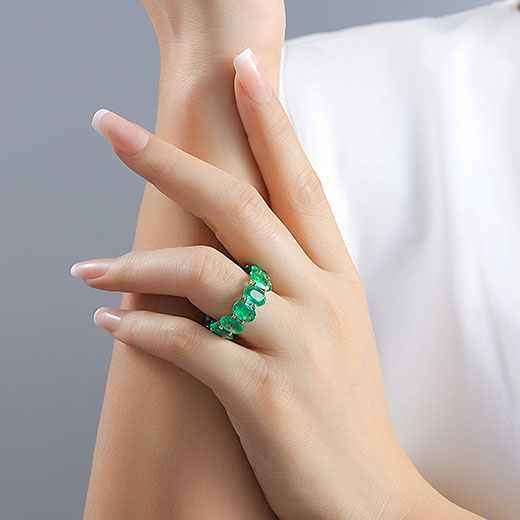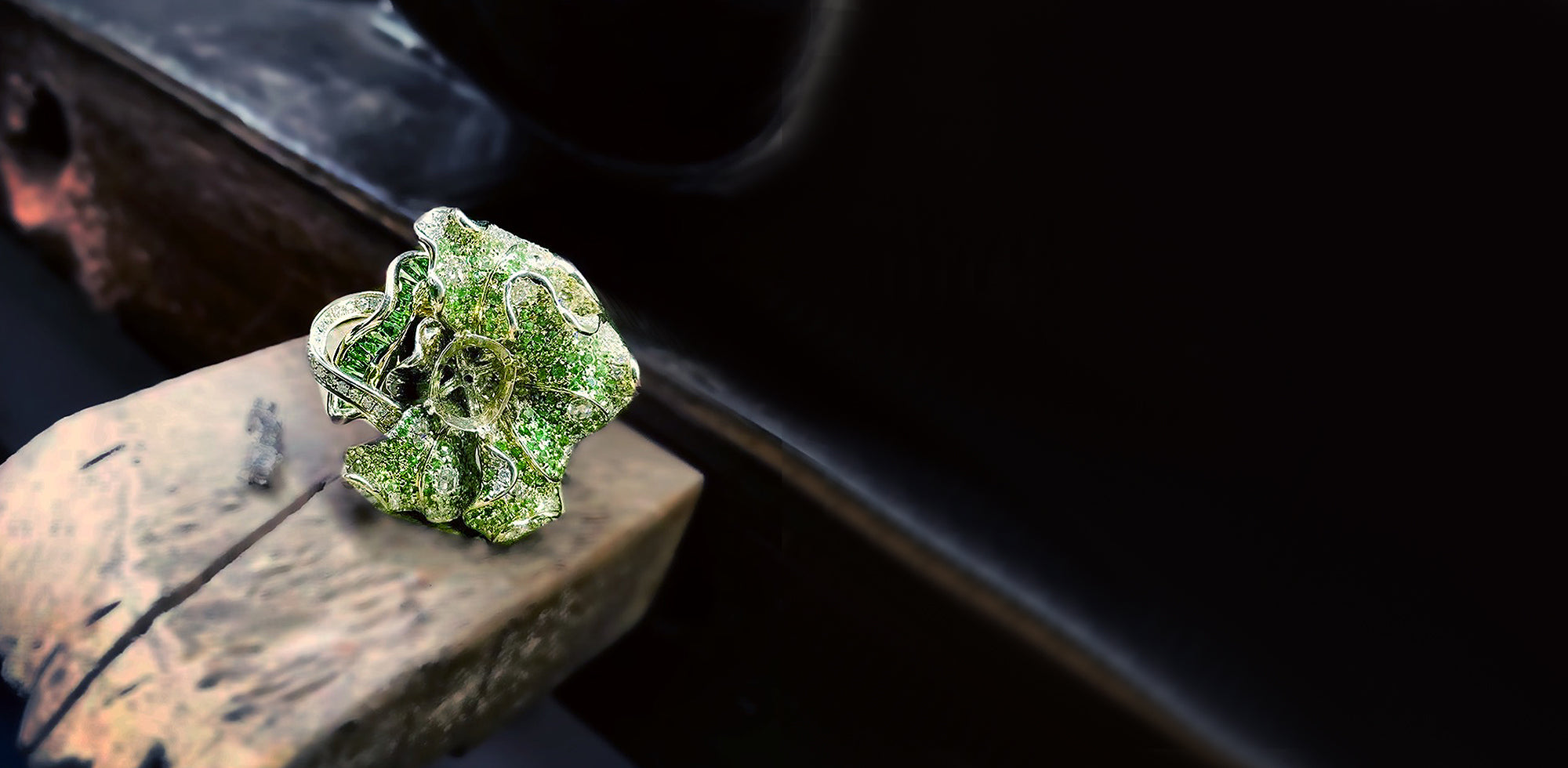Overview
The most popular variety of quartz is amethyst, which is known for its stunning color. This stunning semi-precious stone is formed in "hollow rocks," which are geodes. They grow underground in long prismatic clusters above the geode base and can be found all over the world. This gemstone is usually found as a six-sided crystal with a crystalline crust that covers other rocks. The pyramid-shaped crystal formations are used to make the majority of amethyst jewelry accessible.
The prestigious hue of this gem, which ranges from a pale lilac to a deep, intense purple, is due to the presence of iron and Aluminum impurities. Amethyst has a transparent luster, similar to other macrocrystalline quartz varieties, and the best quality gemstones have good saturation and minimal color zoning.
For centuries, amethyst has been regarded as a valuable gem, comparable to rubies and sapphires. The discovery of massive deposits of amethyst stones in South America and other countries increased availability while lowering rarity and price. Despite this, among the many semi-precious gemstones available today, it remains one of the top choices.
Large amethyst stones can be found in Brazil, the United States, Canada, Mexico, Africa, Australia, and India, though South America is still the most common source. While African mines produce some of the deepest purple-colored and smallest amethyst stones, Australia is known for its darkest varieties. The color of this gemstone varies based on the region it comes from, but its chemical composition are all similar.
Symbolism
The name Amethyst comes from the Greek word "amethystos," which means "not drunk." Amethyst was thought to have the ability to counteract the effects of alcohol consumption as well as promote self - control.
An amethyst was prized for its royal color and mystical powers, and it was regarded as a potent symbol. Amethyst was once more valuable than diamonds because it was extremely rare and only available to the rich and powerful. From the ancient Egyptians to the British monarchs, amethyst became a popular gemstone in royal jewelry. The Christian church held it in high esteem and labelled it "the stone of bishops." The amethyst is mentioned in the Bible as the Holy City's 12th foundation.
Properties
This gemstone has been prized for its captivating beauty throughout history. It is still regarded as a symbol of contentment and spirituality nowadays. The power of amethyst is said to be able to quiet the mind and prevent conflicting emotions. It is also the birthstone for those born in February, as well as the gemstone for the 6th and 17th wedding anniversaries.
Hardness and Strength
Amethyst is genuinely a gorgeous gemstone scoring a 7 on the Mohs hardness scale. Due to its relatively durable properties, Amethyst engagement rings and fine jewellery have become popular. Nevertheless, proper care and safety precautions must be implemented to avoid scratches or other types of damages.
Treatment
Amethyst stones have been heat treated since the beginning, primarily to improve their color and clarity. Because dark-colored amethysts are more popular than light-colored amethysts, the majority of those on the market today have been synthetically enhanced to achieve darker hues. Heating this gemstone to a temperature of 400 to 500 degrees Celsius in a controlled environment can intensify its color and turn it into a royal purple shade. This is a widely used treatment with long-lasting results. An amethyst may also undergo fracture-filling treatment to improve overall clarity in rare instances.
Grades
Due to its widespread availability, amethyst has become a popular gemstone once reserved only for royalty. Its value is primarily determined by the color, as well as a few other factors listed below.
Color
The captivating purple brilliance of amethyst is well known. It comes in a range of colors (from pale lilac to deep reddish purple), but the darker the color, the more valuable the gemstone.
A deep reddish-purple or purple hue can be found in some of the finest amethyst stones. Its value is also boosted by the lack of visible color zoning.
Clarity
The majority of today's faceted amethyst gems are bereaved of visible inclusions, but there are special cases. Minor inclusions in a high-quality amethyst with a rich color are usually neglected. The most expensive amethyst stones have exceptional clarity, whereas light or pastel colored amethyst stones with visible inclusions are more affordable.
Cut
Amethysts are commonly cut into a range of shapes, including pear, emerald, square, trillion, heart, cushion, cabochon, round, and oval. This gemstone can also be cut into a variety of free-hand shapes, which can be achieved using automated cutting or manually. These designer cuts of amethyst stones create one-of-a-kind, high-priced pieces.
Carat
The wide availability of large-sized amethysts ensures that its value is unlikely to be affected by its carat weight. However , the color has a significant impact on the stone's value.
Despite the lack of a standardized grading system for amethysts, they can be divided into the following quality categories based on their various characteristics.
AAAA-Heirloom
This category includes the top 1% of incredibly rare amethysts. These gems have the characteristic of being eye-clean, which implies that they have no visible inclusions to the naked eye. The peculiar dark purple hue of heirloom-quality amethyst makes it extremely desirable.
AAA-Best
The top ten percent of amethyst stones fall into this category. These stunning gems have a medium dark purple color and are eye-clean.
AA-Better
This includes the top 33% of amethyst stones available in regards to quality. They're a medium purple color with slight inclusions.
A-Good
This category includes the top 75% of amethyst stones with slight to moderate inclusions and a light purple coloration.
Care Guides
The enchanting amethyst is a fairly hard stone that is suitable for daily use to a considerable extent. Even so, there are a few things that need to be kept in mind in order to keep it looking good.Wearing amethyst jewelry while doing housework or engaging in strenuous activities is not recommended.
- Chemicals such as household cleaners and hairspray should be avoided.
- Use a mild soap solution and a soft brush or sponge to clean. Dry with a soft cloth after wiping.
- Excessive exposure to direct sunlight and extreme heat can cause discoloration or degradation of the color of the amethyst.
- Unless in cases where the stone has been dyed or fracture-filled, ultrasonic cleaners are generally safe for cleaning amethysts.
- Extreme heat or steam cleaning should be avoided because the amethyst may fracture due to the sudden temperature change.
- To avoid friction, keep your amethyst jewelry in a fabric lined box or wrap it in a soft cloth individually from your other jewels.
- The amethyst, a truly flawless gemstone, is prized for its breathtaking royal shades. If you keep the above tips in mind, you'll have a gemstone that looks fresh and new for years to come.

